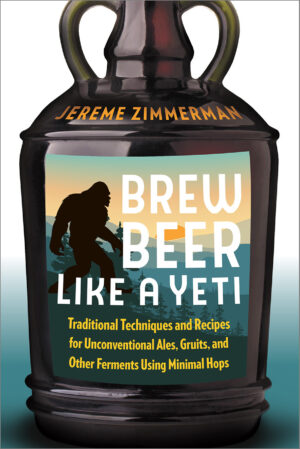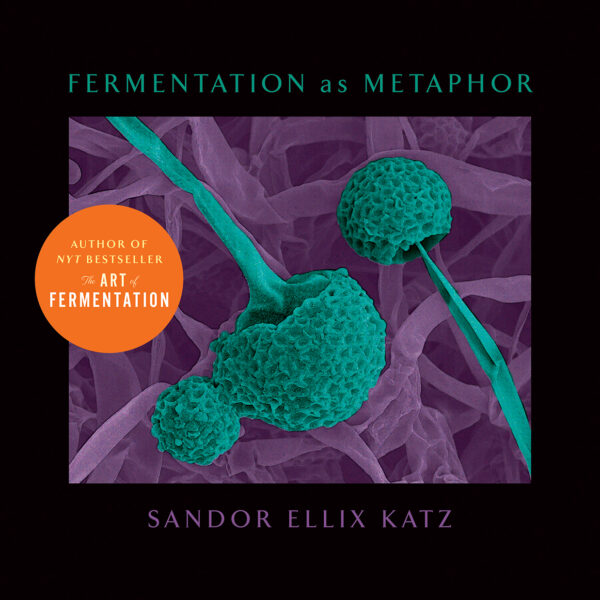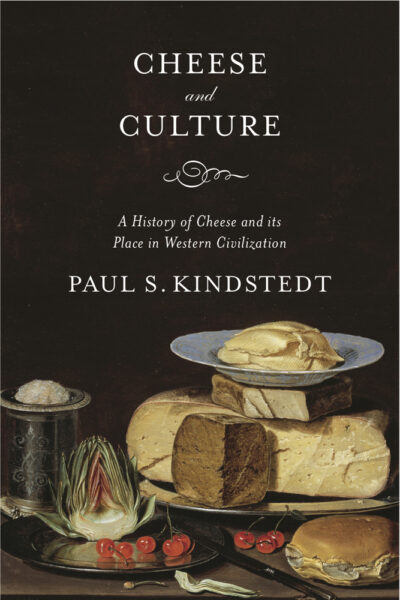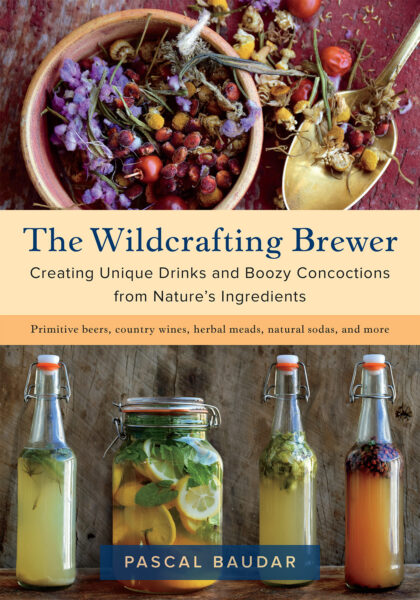Brew Recipe: Lambswool Wassail

(Mugs of Lambswool Wassail. Photo by Jereme Zimmerman)
Wassail! Whassat? We’ll tell you! From brewing genius Jereme Zimmerman, we have another out-of-the-barrel brew for you to try at home. Especially on those colder nights.
This recipe is an excerpt from Brew Beer Like a Yeti by Jereme Zimmerman and has been adapted for the web.
Winter festivities were always a good excuse to drink ale, both for warmth and to pass the time with food, friends, and family while the land was hard with frost. One festive health-drinking tradition that is still alive in some communities today is the wassail. A wassail (stemming from the Old Norse ves heill, or “be healthy”) is an activity, toast, drink, and the drink’s receptacle all in one. On New Year’s Day (although sometimes during the time between Yule and New Year’s Day) revelers would go through the village and enter their friends’ houses unannounced, bearing a wassail-bowl of spiced ale—singing carols and presenting wishes or a year of good health by exuberantly exclaiming wassail! as the bowl was held up, drunk from, and passed along. It was then expected that each household contribute to the festivities by adding its own brew to the bowl and then joining the throng as it moved on to the next house. There are many, many wassail songs celebrating all of the aspects of life for which good health and cheer are offered.
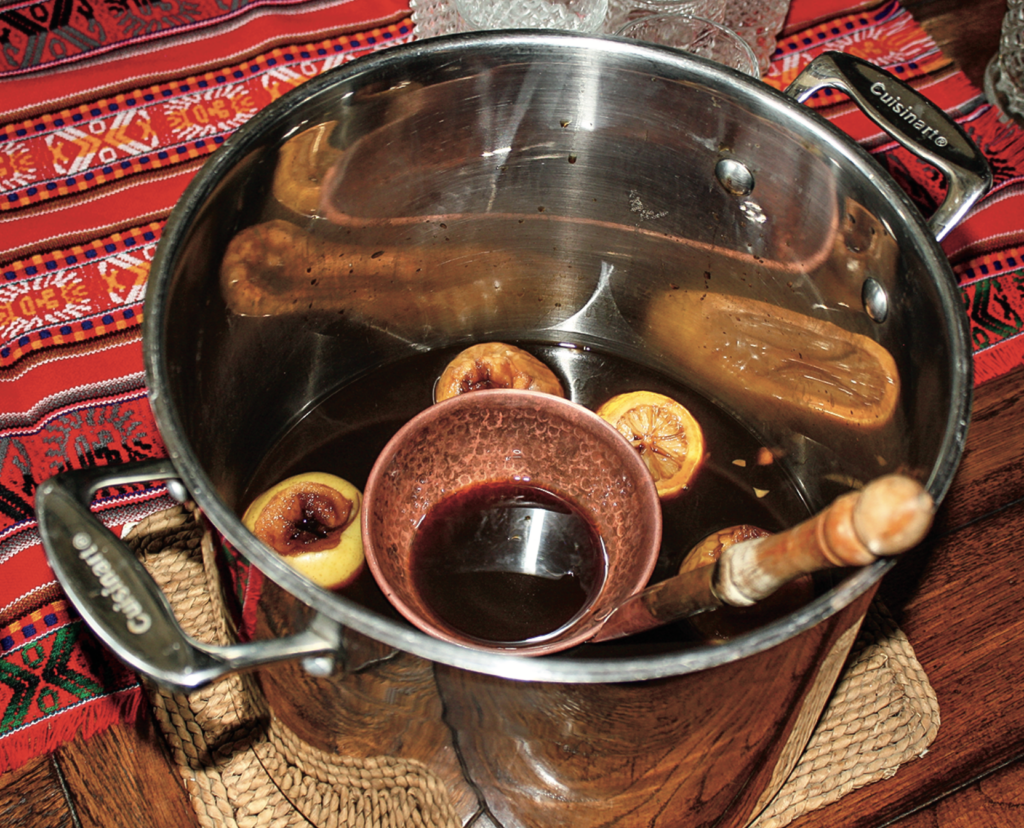
A pot of wassail. Photo by Jereme Zimmerman
Nearly every household had its own wassail recipe, which could vary quite a bit. In general, the drink was warm and spiced with exotic flavorings. It could range from a mulled wine, to a mulled mead, to a spiced ale or cider, to any combination of these. Often it was a bragot (a spiced honey ale—see chapter 9), although the bragot wasn’t always made with fermented honey, or even spiced at brewing. Sometimes the honey and spices were added later, after the ale was warmed. The wassail-bowl didn’t always consist of liquid nourishment only; a version known as lambswool was made by sprinkling apples with sugar, grated nutmeg, cinnamon, ginger, and other spices, then roasting them until soft. The skins were removed from the apples, warmed ale was poured over them, and everything was blended into a puree. The bowl was then served while still warm, often with spiced sweet cakes or toast floating on it. I have come across claims that to offer a drink as a “toast” came from this tradition but have been unable to verify it. Still, it’s a worthy concept to consider.
Serves 6-8
Ingredients
6 apples
1 teaspoon each freshly grated nutmeg, cinnamon, cloves, ginger, or any other spices that suit your fancy
1⁄2 cup (125 mL) organic cane sugar or brown sugar
1 cup (250 mL) water (or substitute hard cider, ginger beer, red wine, Madeira, port, mead, or what-have-you)
1 small lemon or orange
4 pints low-to-no-hopped ale, preferably British-style ale, spiced dark ale, or bragot
Dark rum, brandy, or other spirits (optional)
Procedure
- Core the apples and place them in a pot or deep baking dish.
- Sprinkle the spices and sugar and pour the water or what-have-you over the apples.
- Squeeze the juice of the lemon or orange (or both) over everything.
- Place a pot on a medium-high burner, or put a baking dish into the oven at 350°F/180°C.
- Cook for about 45 minutes or until the apples are soft and mushy.
- Remove from the heat and allow the apples to warm enough to carefully remove their skins.
- Once the skins are removed, take a masher, large fork, or blender and blend everything (including the ale) into a puree (for the lambswool option; otherwise, remove the apples and make them into boozy applesauce).
- Place the lambswool in a bowl with a serving spoon, or ladle it into individual mugs.
- Optional: Add as much additional dark rum, brandy, or other spirits as you desire; I like to keep this going for several days by continuing to add various drinks and spices to it and rewarming it.
- Wassail!
Recommended Reads
Recent Articles
Garlic mustard: while known as “invasive,” this plant can be consumed in its entirety and has great nutritional value. Plus, the garlic-flavor is a perfect addition to any recipe that calls for mustard! The following are excerpts from Beyond the War on Invasive Species by Tao Orion and The Wild Wisdom of Weeds by Katrina…
Read MoreOh, honeysuckle…how we love thee. If only there was a way to capture the sweet essence of this plant so we could enjoy it more than just in passing. Luckily, foraging and some preparation can help make that happen! Here’s a springtime recipe that tastes exactly like honeysuckle smells. The following excerpt is from Forage,…
Read MoreIntroducing…your new favorite brunch dish! This whole broccoli frittata is packed with fresh, wildcrafted flavors that are bound to help you start your day off on the right foot. The following is an excerpt from The Forager Chef’s Book of Flora by Alan Bergo. It has been adapted for the web. RECIPE: Whole Broccoli Frittata…
Read MoreWondering where to forage for greens this spring? Look no further than hedges, which serve as natural havens for wild greens and herbs! The following is an excerpt from Hedgelands by Christopher Hart. It has been adapted for the web. Food from Hedges: Salads and Greens Let’s start by looking at all the wild foods…
Read MoreThere’s a whole new world out there when it comes to koji. It doesn’t matter if you’re making bread, cheese, or ice cream, koji helps you pump up the flavor! Growing Koji in Your Own Kitchen Koji, the microbe behind the delicious, umami flavors of soy sauce, miso, fermented bean sauce, and so many of…
Read More

